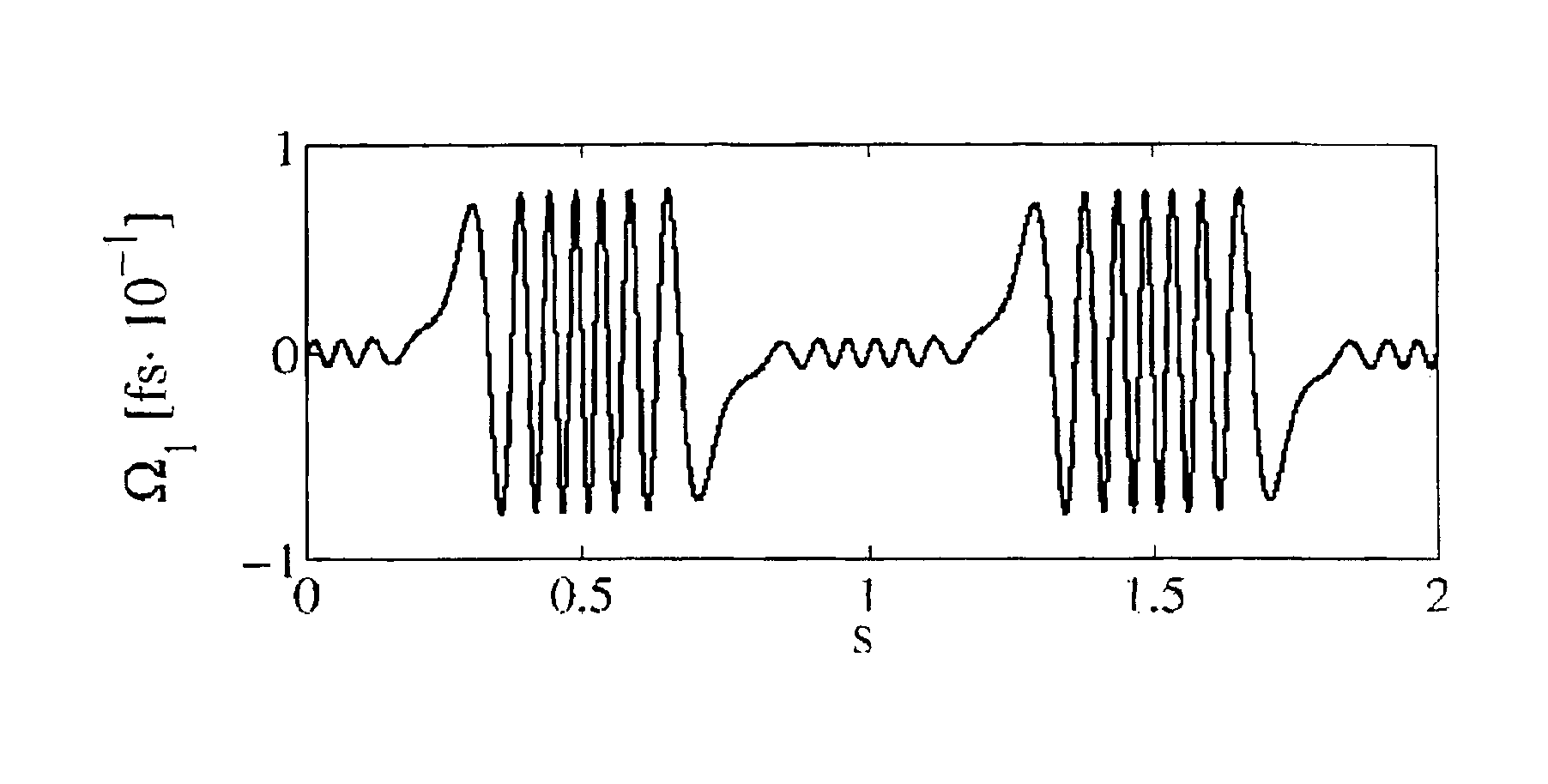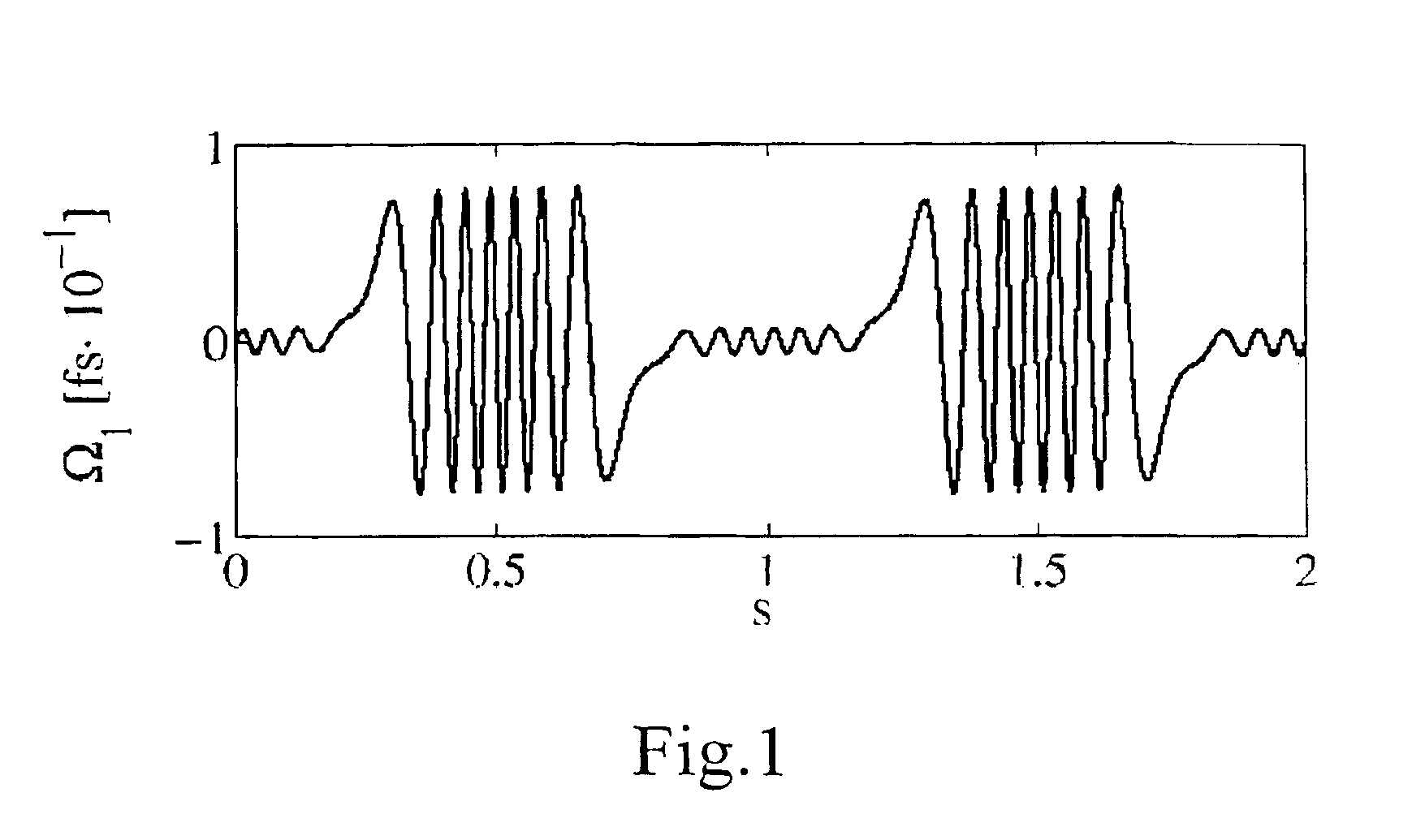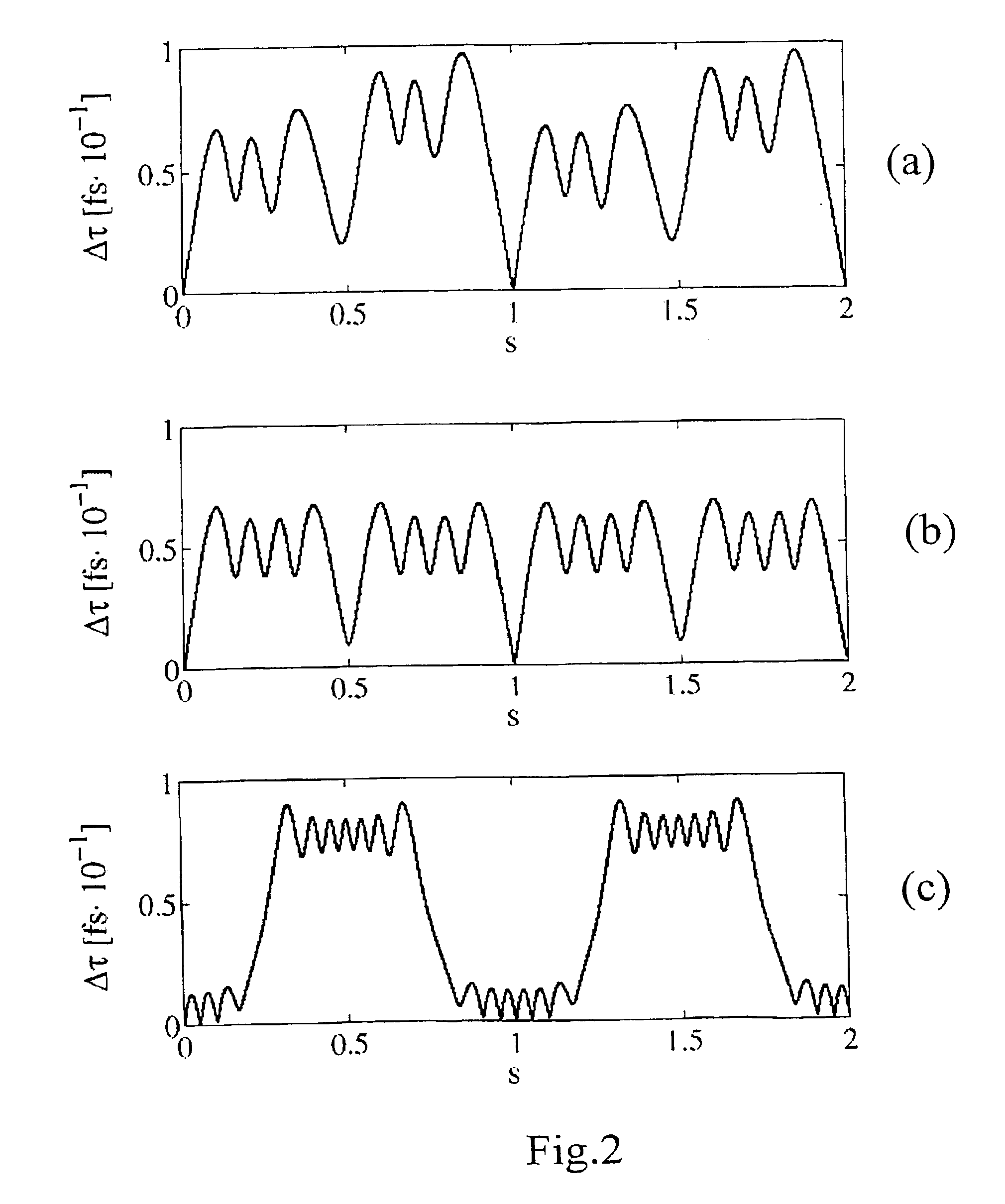Optical fibre with reduced polarization mode dispersion and method for obtaining an optical fibre with reduced polarization mode dispersion
a technology of optical fibers and polarization modes, applied in the field of optical fibres, can solve the problems of affecting the polarization state of optical fibres, and breaking the circular symmetry, and achieve the effect of reducing the pmd coefficient of optical fibres
- Summary
- Abstract
- Description
- Claims
- Application Information
AI Technical Summary
Benefits of technology
Problems solved by technology
Method used
Image
Examples
examples
[0153]1) As a first example, a sinusoidal spin rate function has been considered. This function has only odd harmonics. In the above introduced adimensional system, such spin rate function may be written as
γ(s)=2γ1 cos(εs)
and the corresponding integral function G(s) reads as G(s)=∫0s2γ1cos(ξ s′)ⅆs′=2γ1ξsin(ξ s)
[0154]Under the short period assumption, the DGD is periodic if the following condition is satisfied (see (13)): ∫0χ / 2cos(2γ1ξsin(ξ s))ⅆs=2πξJ0(2γ1ξ)=0
where J0 is the first kind Bessel function of order 0.
[0155]Exemplarily, by setting ξ=2π, a possible value γ1 which can be found in order to satisfy the above condition is 37.05. By setting these parameters in the spin function and numerically solving equation (6), the periodic evolution of the PDV and of the DGD was verified, as it is shown, respectively, in FIG. 1 and FIG. 2(c). As analitically predicted, Ω1 has zero mean and, hence, Δτ is a periodic function of distance with the same period as Ω1. For...
PUM
| Property | Measurement | Unit |
|---|---|---|
| speed | aaaaa | aaaaa |
| beat length LB | aaaaa | aaaaa |
| length | aaaaa | aaaaa |
Abstract
Description
Claims
Application Information
 Login to View More
Login to View More - R&D
- Intellectual Property
- Life Sciences
- Materials
- Tech Scout
- Unparalleled Data Quality
- Higher Quality Content
- 60% Fewer Hallucinations
Browse by: Latest US Patents, China's latest patents, Technical Efficacy Thesaurus, Application Domain, Technology Topic, Popular Technical Reports.
© 2025 PatSnap. All rights reserved.Legal|Privacy policy|Modern Slavery Act Transparency Statement|Sitemap|About US| Contact US: help@patsnap.com



